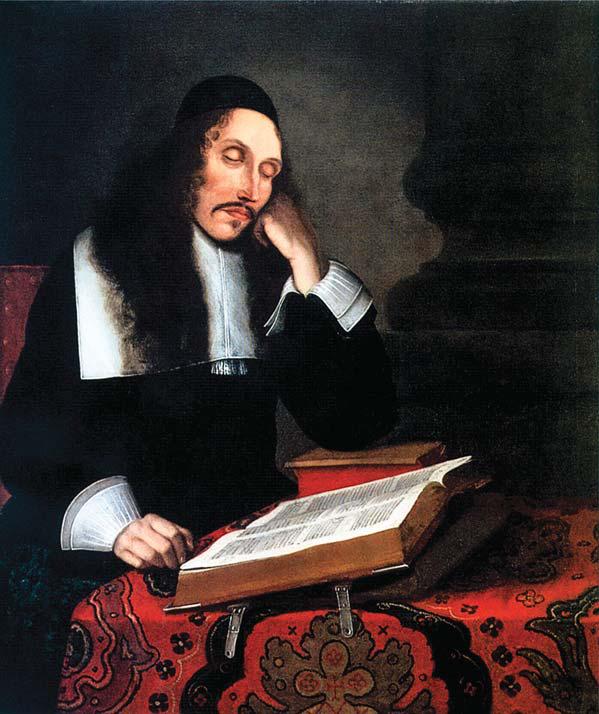يحاول ذهب - حر
THE RETICENT RADICAL
February 12 -19, 2024 (Double Issue)
|The New Yorker
Baruch Spinoza's quiet revolution.

In March, 1668, Adriaan Koerbagh, a Dutch physician in his mid-thirties, hired Johannes Van Eede, a printer in Utrecht, to publish his new book, “A Light Shining in Dark Places, to Shed Light on Matters of Theology and Religion.” But Van Eede, after setting the first half of the manuscript, became uneasy about its highly unorthodox contents. Koerbagh argued that God is not a Trinity, as the Dutch Reformed Church taught, but an infinite and eternal substance that includes everything in existence. In his view, Jesus was just a human being, the Bible is not Holy Writ, and good and evil are merely terms we use for what benefits or harms us. The only reason people believe in the doctrine of Christianity, Koerbagh wrote, is that religious authorities “forbid people to investigate and order them to believe everything they say without examination, and they try to murder (if they do not escape) those who question things and thus arrive at knowledge and truth, as has happened many thousands of times.”
هذه القصة من طبعة February 12 -19, 2024 (Double Issue) من The New Yorker.
اشترك في Magzter GOLD للوصول إلى آلاف القصص المتميزة المنسقة، وأكثر من 9000 مجلة وصحيفة.
هل أنت مشترك بالفعل؟ تسجيل الدخول
المزيد من القصص من The New Yorker

The New Yorker
Amanda Petrusich on Katy Grannan's Photograph of Taylor Swift
There’s something uncanny about this still and stunning portrait of a twenty-one-year-old Taylor Swift, shot by Katy Grannan for Lizzie Widdicombe’s Profile of the singer, in 2011.
1 mins
January 12, 2026

The New Yorker
DEAL-BREAKER
Pam is seeing someone, but she’s not talking about it.
19 mins
January 12, 2026
The New Yorker
THE OTHER BOOMERS
Kathryn Bigelow, the director, and Alexandra Bell, the arms-control expert, are both nuclear-attack-submarine literate. Bigelow—whose new Netflix film, “A House of Dynamite,” imagines the U.S. government’s response to an incoming intercontinental ballistic missile (ICBM) eighteen minutes from impact—shot part of her 2002 submarine film, entitled “K-19:
3 mins
January 12, 2026

The New Yorker
THE MUSICAL LIFE BROADWAY BABY
At Joe’s Pizza on Carmine Street, Marc Shaiman, the celebrated composer and lyricist, dropped his slice on the floor. “Ugh, it’s the Shaiman vortex,” he said. “Everything I come near breaks.”
3 mins
January 12, 2026

The New Yorker
NOTORIOUS M.T.G.
Marjorie Taylor Greene and Donald Trump break up over Epstein.
26 mins
January 12, 2026

The New Yorker
YES, AND?
How consent can—and cannot—help us have better sex.
14 mins
January 12, 2026

The New Yorker
LET IT BLEED
When Helen Frankenthaler remade painting.
5 mins
January 12, 2026

The New Yorker
THE AMERICAN POPE
How the Chicago-born Robert Prevost became Leo XIV.
32 mins
January 12, 2026

The New Yorker
DEPT. OF RECYCLING SWIPE OUT
In 1994, when the MetroCard made Its 22, many straphangers were reluctant to say farewell to the subway token. Across the city, commuters struggled to master \"the swipe.
2 mins
January 12, 2026
The New Yorker
THE TALK OF THE TOWN
Easily missed on the back side of the November ballots that brought Zohran Mamdani to Gracie Mansion was a proposal for a new map of New York City.
4 mins
January 12, 2026
Listen
Translate
Change font size
